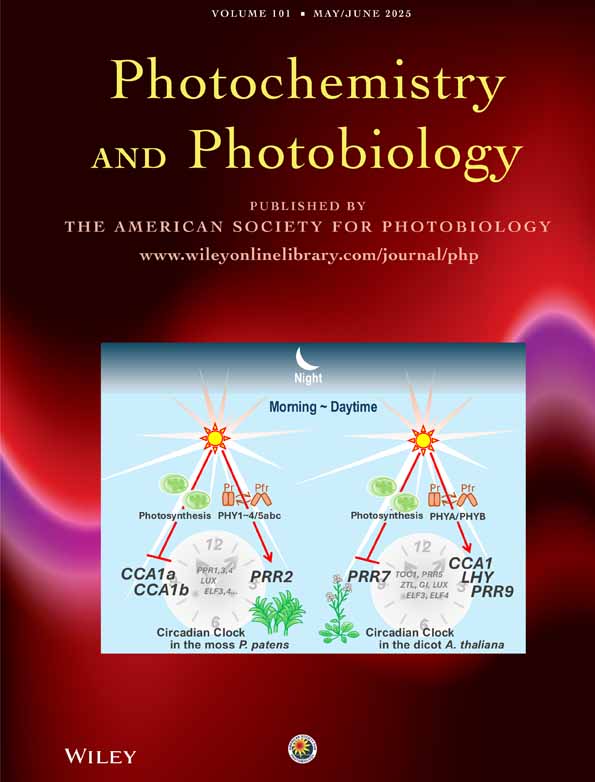ISOLATION AND CHARACTERIZATION OF A MARSUPIAL DNA PHOTOLYASE
Abstract
Abstract— Post UV-B(280–320 nm) exposure to UV-A(320–400 nm) reverses pyrimidine dimers in the epidermal DNA of the South American opossum Monodelphis domestica [Ley, R. D. (1984) photorepair of pyrimidine dimers in the epidermis of the marsupial Monodelphis domestica. Photochem. Photobiol. 40,141–143.] To demonstrate that the observed photorepair is mediated by an enzyme, we have isolated a DNA photolyase from the opossum. DNA photolyase from liver was purified 3000-fold by ammonium sulfate fractionation and phenylsepharose, hydroxylapatite, DEAE-cellulose and DNA-cellulose column chromatography. Heat denaturation (60°C for 4 min) completely eliminated the photoreactivating activity. The enzyme was active in the pH range of 5.5 to 8.5 with a pH optimum of 7.5. The enzyme has an apparent molecular weight of 32 000 under nondenaturing conditions. The activity of the enzyme was not affected by sodium chloride up to 250 mM. The action spectrum for the purified DNA photolyase showed activity in the range of325–475 nm with peak actvity at 375 nm.




